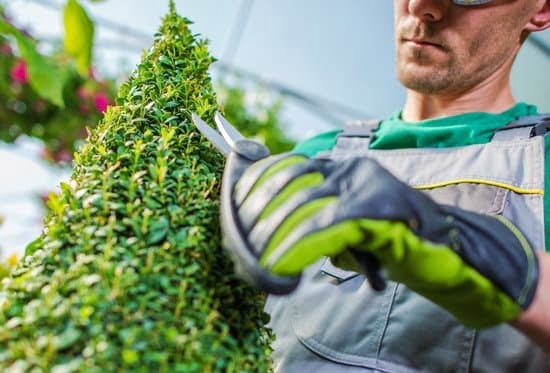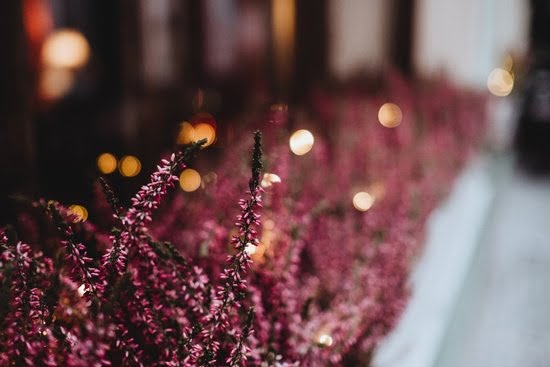Introduction
Square Foot Gardening (SFG) is an incredibly efficient and effective approach to gardening. By dividing a garden space into small, manageable square foot sections, it allows anyone – regardless of how small their backyard is – to get the most out of their gardening experience. SFG also offers numerous benefits to gardeners and the environment alike.
One of the greatest advantages to Square Foot Gardening is that it maximizes space efficiency by allowing gardeners to cultivate crops in smaller plots than traditional systems do. The method saves time, energy, and money on both purchasing and maintaining supplies like digging equipment or lawnmowers. Furthermore, the plants that are grown have greater access to sunlight, nutrition, moisture, and air-circulation due to their more shallow root depths; this gives a noticeable boost in yield when compared with traditional row planting gardening methods.
Another benefit of Square Foot Gardening is that the raised beds help minimize soil compaction which helps promote healthy root growth. This eliminates the need for farmers or gardeners having to turn up the soil or scrape away underlying weeds as they would otherwise have to do in order to create traditional rows for growing vegetables. Moreover, these raised beds allow better control over sources of fertility and nutrition such as mulch or compost as well as improved drainage levels for rainwater runoff. They can even be used protect tender plants from inclement weather conditions like frost or heavy winds.
Due to its numerous benefits, Square Foot Gardening’s popularity has been increasing significantly throughout recent years – making protective covers very important for those who practice this type of vegetable growing system. A good protective cover will provide protection from pests and other animals while still providing enough light and air circulation so that crops can grow effectively during colder months while preserving heat within the garden bed during hot summers days – protecting young seedlings before they’re strong enough to withstand nature’s elements on their own.
Types of Square Foot Garden Setups
Square Foot Gardening is an incredibly efficient and space-saving method of planting. It involves dividing up a garden bed into smaller beds, or “squares,” then allotting each square to different types of plants so that they have plenty of room to grow. To help protect your square foot garden from unwanted pests, heavy wind, cold temperatures and other threats, you can install protective cover.
The most common type of protective cover used in square foot gardening is row covers. Row covers are lightweight sheets of fabric that fit over your planted rows and helps to keep out these potential threats by increasing humidity and air flow around the plants while also providing warmth during colder seasons. Row covers also provide valuable protection against bird feeders and other small animals who may otherwise destroy your plants. If you live in a particularly cold region, it’s important to opt for heavier weight row covers for added insulation as regular row covers offer only minimal protection from lower temperatures.
Another type of protective cover which is ideal for square foot gardens is shade cloths or greenhouses. Shade cloths protect plants from direct sunlight exposure by allowing light to filter through while still reducing the effects of extreme temperatures; meanwhile greenhouses can create a micro-climate around the area, enhancing temperature control and increasing both air flow and humidity levels around the garden bed—ideal if you have trouble creating moisture around your garden beds due to strong winds or dry climates. For both shade cloths and greenhouses, it’s best to purchase temporary coverings that can easily be removed when necessary or on particularly hot days.
Different Types of Protective Cover Materials
Protective covers are an essential tool for anyone interested in square foot gardening as it offers a number of benefits. While there are many types of protective cover, some popular materials used to create these covers include greenhouses, plastic tunnels, and insect nets. Greenhouses are useful in providing extra insulation during hot summer days or cold winter nights, while plastic tunnels also provide protection against wind, hail, and insects. Insect nets provide protection from pests such as caterpillars and fruit flies that can destroy plants. Finally, shade cloth and row cover fabrics can be used to create mini climates to protect tender plants from extreme temperatures or cold winds. As you progress with your square foot gardening project you may discover other protective covers that work best for your garden needs!
Advantages and Disadvantages of Each Protective Cover Material
One of the key components to growing a successful square foot garden is the use of protective covers. Available materials for protecting plants from inclement weather, pest infestations, and other environmental factors include sheets of plastic, row covers, shade cloths or netting.
Advantages of Using Plastic as a Protective Cover:
• Affordable: Plastic sheeting for garden protection generally costs less than other protective cover materials.
• Long Lasting: Packaged plastic covers are designed to last many seasons without needing to be replaced.
• Temperature Control: Plastic cover traps heat and can extend the growing season in cooler climates by raising temperatures around the plants.
Disadvantages of Using Plastic as a Protective Cover:
• Plant Suffocation: Without adequate airflow, some plants may suffer under the weighty plastic cover – usually during hot and sunny days.
• Environmentally Unfriendly: Disposal can be difficult since plastic takes centuries to degrade, making it an unsustainable material option for gardeners concerned with their impact on the environment.
• Non-Breathable Material: Plastic does not allow air to circulate through enough for proper growth and photosynthesis in plants.
Tips for Selecting the Right Protective Cover for A Square Foot Garden
1. Choose a protective cover material that is UV resistant and has some sort of permeable and waterproof qualities. If a garden is exposed to direct sunlight all day it’s important to find a material that blocks ultraviolet rays and reduces the drying effect of the sun. Materials like polyethylene, polycarbonate, or polyvinyl chloride (PVC) are good choices for this purpose.
2. Make sure you purchase a cover large enough for your square foot garden. It’s important to get one that covers the entire surface area and also extends slightly over each end so it can be secured firmly without any gaps at the edges.
3. Consider the thickness of the material when selecting a protective cover for your square foot garden. Thicker materials will last longer in harsher climates, where wind and rain may be more intense, so investing in quality materials is recommended for those regions.
4. Look for materials that are lightweight, yet strong enough to protect against cool temperatures, strong winds, and heavy rains or snowfall if necessary. Lightweight materials like mesh netting won’t weigh down your frame but still offer decent coverage from harsh weather conditions.
5. Ensure the protective cover you select is serious about trapping heat energy inside the garden while letting in enough light to allow plants to continue photosynthesis during cooler months if this is an issue in your region. Tightly woven fabrics are usually best when gardening in climate zones with extreme fluctuations in temperature between day and night time periods as they offer superior insulation capacities compared to other materials available today
How to Install Protective Covering on a Square Foot Garden
When it comes to protecting your Square Foot Garden from the elements, installing a protective covering is an easy and effective way to ensure its longevity. Below are some tips on how to install this type of cover:
1. Start by measuring the dimensions of your garden and determine where you intend to place the cover.
2. Be sure that you have enough material based on these measurements; consider possible wind gusts if necessary.
3. Lay out the cover and mark where it should be attached, such as stakes or poles.
4. Attach the cover securely in place with fastening materials such as bungee cords or clamps; make sure that all connections are tight for optimal security against weather conditions.
5. Use sand bags or another heavy object around the edges of your protective covering to keep it from blowing away in strong winds.
6. Lastly, to allow ventilation and light into your garden, use breathable materials such as burlap or shade cloth rather than plastic or other non-breathable fabrics wherever possible – but make sure that any openings will not be open enough for pests or rodents to get inside!
Maintenance Tips for Protective Cover
Square Foot Gardening Protective Cover is a great way to protect your plants from harsh weather conditions and pests. To ensure that your protective cover lasts for many years, follow these maintenance tips:
1. Make sure you clean the cover regularly with warm soapy water to remove any dirt or debris from the surface. This will help keep it looking like new longer.
2. When not in use, store the protective cover in a dry place away from direct sunlight and moisture. Sunlight and moisture can degrade the fabric over time and reduce its lifespan significantly.
3. Inspect the grommets regularly to make sure they are securely fastened, as this will prevent wind damage in storms and strong winds during mild weather conditions.
4. Check all zippers, clasps, buckles, and other closures regularly to make sure they are working properly and are not jammed or difficult to opening or closing when needed.
5. When using chemicals such as fertilizer or pesticides to protect plants underneath the protective cover, do a patch test first on an inconspicuous area of the cover to make sure that it is not damaged by this type of treatment before applying to larger sections of coverage area.
DIY Protective Covering Ideas
Many square foot gardeners opt to make their own protective coverings using materials they have on hand. Popular DIY covers include plastic bottles, bird netting, and old bed sheets or table cloths. Plastic bottles are ideal for small plants as they can be cut in half, allowing the tops to fit comfortably around the plant. For larger plants, gardeners often choose to use bird netting. This can be secured around the plants with sticks or wire to protect them from critters. Finally, bed sheets or table cloths are a great choice when you need something that’s easy to put in place and remove. All three of these options work well for providing your plants with protection from the elements and keeping pests away.
Conclusion
A protective cover for a square foot garden can help to enhance the benefits of gardening this way. A cover increases the amount of warm air held in close proximity to the plants, which helps to promote faster growth. It also provides a barrier against pests and other predators that may prey on the crops, as well as protecting from extreme weather events such as hail storms or heavy winds. Additionally, it shields the garden’s soil from direct sunlight and holds in moisture which results in less water being needed during dry periods.
Using a protective cover for your square foot gardening will also help increase its aesthetic appeal; creating an aesthetically pleasing microclimate with lush foliage ready for harvesting. Not only is it easy to install and use but also relatively inexpensive compared to other gardening techniques such as raised beds or containers. While using a protective cover will undoubtedly improve your gardening experience in many ways, extra consideration should still be given towards ensuring proper draining and avoiding midday sun on non-hardy plants if trying to avoid wilting or mildewing of crops.

Welcome to my gardening blog! I am passionate about plants and enjoy sharing my knowledge and experiences with others. In this blog, I will write about everything related to gardening, from tips on how to get started to updates on my own garden projects.





